👀 1. Attention Is Everything: Sales follow attention. The best brands grow by knowing where people are looking—and showing up there.
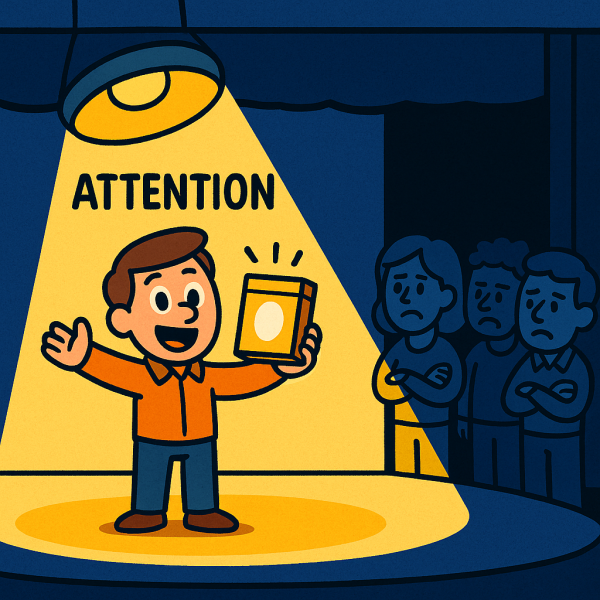
Let’s start with the big idea: if you don’t have attention, you have nothing. You could have the best product in the world, but if nobody knows about it—or cares—you won’t sell anything.
Gary Vee calls attention the most valuable currency in marketing today. Get it, and you have a shot at selling. Miss it, and you’re invisible.
The book opens with a perfect example: a guy named Nathan Apodaca, aka @doggface. He was just riding his longboard to work at a potato factory in Idaho, sipping Ocean Spray cranberry juice, and lip-syncing to a Fleetwood Mac song. Simple video. No big production.
But it blew up.
That TikTok got 2 million views the first day and eventually passed 90 million. It changed Nathan’s life—sponsorships, millions of followers, even a music collab with Snoop Dogg. But here’s what’s wild: Ocean Spray sales spiked, and that song from the 1970s hit the top of the iTunes charts. All because of one relatable, authentic moment that captured people’s attention.
Social Media Isn’t What It Used to Be
Gary Vaynerchuk is the CEO of VaynerMedia, a creative social media agency, and a New York Times bestselling author. Known for his energetic style and no-BS advice, he’s also a public speaker and an early investor in major platforms like Facebook and Twitter.
Back in 2009, when Gary wrote his first book (Crush It!), people still questioned if social media even mattered. Today, everyone knows they need to be on it—but most are doing it wrong.
The platforms are constantly evolving. What worked in 2018 doesn’t work today. That’s why Gary says you can’t just be on social media—you have to actually understand how attention works on it right now.
Today, brand relevance is even more important than a call to action. People buy stuff that means something to them. That’s why Nathan’s cranberry juice video worked—he didn’t say “buy Ocean Spray,” but people rushed out to do that. Why? They felt the vibe. The product became part of the moment, part of the culture.
The New Rules of Modern Marketing
Gary introduces six key ingredients for marketing in today’s world. Don’t worry—he breaks them down more later in the book, but here’s a preview:
- Developing your cohorts – Know exactly who you’re talking to. Being very specific will allow you to make content that grabs people and stands out.
- Understanding platform culture – Study the vibe of each platform and what’s trending with your target audience.
- Being strategic with content – Pay attention to what actually works now: hooks, video length, thumbnails, etc.
- Amplifying what works – Take your best-performing organic content and turn it into paid ads.
- Producing commercials – Turn top-performing ideas into higher-production videos (like funny skits).
- Analyzing feedback – Use feedback and data to constantly improve your content.
He gives an example of a kids’ clothing brand targeting two groups: moms in their 30s and “girl dads.” The smart move? Go on TikTok, search “girl dad,” and study the content that’s already working. Look at trends, humor, emotion—this is your blueprint.
- Attention is the foundation of marketing—without it, nothing else matters. This book is about going where the attention is now.
- Social media success is about understanding both your audience and the culture of each platform. Start by knowing who you’re talking to and what they’re paying attention to. The best marketing makes your brand feel relevant—not pushy.
In Traffic Secrets, Russell Brunson talks about building a “Dream 100” list—a list of the top 100 creators or influencers in your niche on each platform. You study them not just for inspiration, but to reverse-engineer their success and possibly collaborate.
Let’s say you’re selling a course on building muscle for men and want to use Instagram. First, make a list of the top fitness influencers. You probably already know a few. Follow their content. Instagram’s algorithm will start suggesting more. Search keywords like “six-pack abs” and look at the top results. Study what they post about, their content formats, video length, etc.
The message is the same as Gary Vee: Stop guessing. Start modeling what’s already working.
📈 2. Find Underpriced Attention: Win at marketing by showing up early on platforms where attention is high and competition is low.
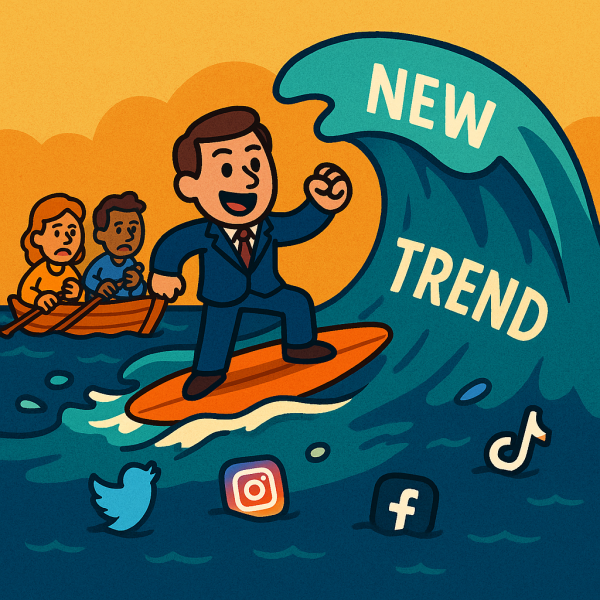
Gary Vee’s entire marketing philosophy can be boiled down to this: go where attention is high but competition is low. That’s what he calls underpriced attention. It’s where you get the most views, clicks, and brand recognition—for the least amount of time, money, or effort.
This is the real reason the book is called Day Trading Attention. Just like a stock trader looks for undervalued companies, you’re looking for undervalued platforms. Places where people are watching, scrolling, and engaging—but not many creators or brands have shown up yet.
TikTok was the obvious example from the last few years. When it first blew up in 2019, Gary jumped in early and started posting like crazy. Everyone else dismissed it as “just for teens.” Meanwhile, he built a massive audience with very little effort or ad spend.
This Isn’t a New Trend—Just a New Format
It was the same story with email marketing in the 1990s, or Google Ads back when clicks were 10 cents. These gold mines don’t stay cheap forever—but the earlier you get in, the better. Even before the internet, underpriced attention existed. In the early days of radio and TV, ads were dirt cheap and crazy effective.
That’s why Gary argues attention is about supply and demand. The fewer people creating content on a platform, the easier it is to stand out and be seen. Once everyone shows up, the cost of attention rises. Just like real estate, the best deals are gone fast.
That’s why Gary keeps trying new things. He’s always yelling about whatever’s next—YouTube Shorts, TikTok, now even Threads—because he knows the next big opportunity is never where everyone is already looking.
Funny enough, Gary believes even a $7 million Super Bowl ad might be underpriced—not because it’s cheap, but because the attention it gets during and after the game is enormous. It’s all about the value of the eyeballs you’re paying for.
Don’t Blame the Algorithm. Adapt Instead.
If your content isn’t performing like it used to, don’t panic. You’re probably not “shadow banned.” You’re just playing on a crowded field. As a platform like Instagram matures, the supply of content becomes massive, and the demand hasn’t kept up. Simple economics. People shift their attention to new places like TikTok.
The goal of every platform is to keep users engaged longer—so if your content isn’t performing, it’s not a “shadow ban”—it’s just not hitting the mark.
The solution? Get flexible. Try new formats. Test fresh angles. Speak to a specific person. Gary went from wine tips to business content to motivation clips. It’s not about changing who you are—it’s about evolving with the platforms and staying relevant.
One of his tips is the 20% rule: Even if something is working for you now, use 20% of your time to experiment. Try a new trend, a new style, or even a new platform. That way, you won’t get left behind when the current wave dies out.
- Underpriced attention = huge reach for little cost. It’s where the real wins happen. Get in early. The first wave always gets the best exposure.
- You probably haven’t been “shadow banned”— simple supply and demand explain why content views drop.
- Stay flexible, test new formats, and follow where attention is heading. Use the 20% rule: Always be trying something new while doubling down on what’s working.
In the book Measure What Matters, we get an inside look at how Google and YouTube work. A few chapters highlight how top leaders at YouTube run the platform.
Over time, their #1 key performance indicator (KPI) has became “watch time”—meaning the top priority for thousands of engineers is keeping people on YouTube as long as possible.
🎵 3. Everything is TikTok Now: Social media has changed—the algorithm doesn’t care how many followers you have, only whether your content is engaging.

Social media used to reward you for building a big following. The more followers you had, the more people saw your posts. Not anymore.
Thanks to TikTok, we’ve shifted to a content-first model. Now, each post gets judged on its own. You could have 10 followers and still get a million views—if the content is good. Experts calls this shift the move from the “social graph” to the “interest graph.”
Instead of showing you posts from people you follow, platforms now show you content based on what you’re interested in.
TikTok’s “For You” page kicked this off, and now everyone’s copying it—Instagram Reels, YouTube Shorts, Facebook, even LinkedIn. It’s what Gary Vee calls the TikTokification of social media.
What This Means for Creators and Brands
The good news? You don’t need a big audience anymore. A single great piece of content can go viral. This gives small businesses and new creators a huge opportunity. You don’t need an established brand or massive budget—because you’re competing based on quality and creativity.
That’s why Gary believes influencer-based brands like MrBeast (Feastables) or Emma Chamberlain (Chamberlain Coffee) could soon become major threats to legacy companies. They know how to win attention, and that’s becoming as important as the product itself.
The challenge? Every post is a fresh test. You can’t rely on your followers to carry weak content. In this new world, you could have a million followers and your next post may only get 3,000 views. You have to keep creating stuff people actually want to watch. That’s what the algorithm rewards.
Let the Data Guide You
How do you know what works? Data. Every platform gives you analytics—views, watch time, comments, shares.
That’s your feedback loop. You post, learn from the data, improve the next time. Rinse and repeat. That’s how your marketing gets better.
Instead of spending millions on focus groups to create one perfect ad, modern marketers post dozens of pieces of content to see what hits—and double down on what works.
- Social media now rewards engaging content, not big followings. Thanks to TikTok, every platform is shifting to an interest-based algorithm.
- You don’t need an audience—you need a great post. Treat every post like a test. Let the data improve your next piece of content and guide your strategy.
Let me connect this to $100M Leads by Alex Hormozi, a popular creator who teaches business and sales.
While Gary Vee focuses on chasing attention across new platforms, Hormozi’s strategy is about capturing that attention and turning it into something you control—an email list.
His approach is simple: offer something valuable on social media (like a free guide or report) in exchange for someone’s email. Then, use email to stay in touch, build trust, and increase the chances they’ll eventually buy.
As Hormozi puts it: “A person who pays with their time now is more likely to pay with their money later.”
🔁 4. Volume Beats Perfection: The biggest mistake people make is not posting enough. The more you post, the faster you learn, and the better your content becomes.

According to Gary Vee, the #1 biggest mistake creators and small businesses make is simply not posting enough. Here’s exactly how often you should be posting…
Gary Vee recommends posting four to five times a day per platform for (at least) 100 days to maximize your chances of hitting on something that resonates.
Gary Vee’s advice? Don’t overthink it—just get started. Think of it like going to the gym: you start with basic exercises and improve over time. In the same way, start creating content now, and you’ll figure out the details as you go.
Quantity Leads to Quality
More content means more feedback—which means you improve faster. It’s like practicing tennis five days a week versus just one: the more reps you get, the quicker you’ll get good.
(This reminds me of Arnold Schwarzenegger’s motto: “everything is reps, reps, reps.” Basically that means no matter how talented you are, you have to put in the work to become great, like he did with bodybuilding and acting.)
Most people worry that if they post too much, they’ll annoy their audience. But here’s the truth: because there’s so much content out there, most of your audience doesn’t even see everything you post.
Even if some of your posts get fewer views, the overall reach will be much higher because you’re simply putting out more content. This volume approach also helps you adapt to changing social media trends, which shift all the time.
Post-Creative Strategy: Learn from Your Audience
After you hit “publish,” your job isn’t done. That’s where Post-Creative Strategy comes in. It’s about studying the response to your content and using that data to improve future posts.
The key here is not just posting a lot but learning from each post. Pay attention to your analytics and comments. Did people watch the whole video? Did they drop off after 5 seconds? Are there repeated questions or criticisms? Use this data to tweak your next post.
Back in the day, companies would spend thousands on newspaper ads without knowing how they performed. Now, you can see exactly how a video did—watch time, drop-off points, comments, shares, and more.
Gary’s agency, VaynerMedia, even has dedicated staff (called Post-Creative Strategists) who do nothing but analyze comments and data after a post goes live.
- Post more often: The more you post, the higher your chances of finding content that resonates.
- Don’t worry about perfection: Start with simple content and improve over time.
- Listen and adapt: Use analytics and comments to understand what works and what doesn’t.
📷 5. Document, Don’t Overthink: Instead of trying to make perfect content, just share your thought and journey. People connect with authenticity.
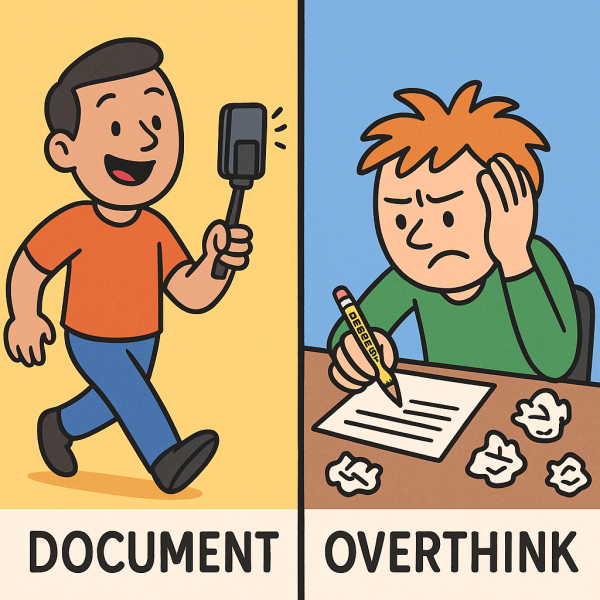
One of the biggest roadblocks for creators and brands is overthinking content.
Gary Vee’s advice is simple: Stop worrying about being polished. Instead of trying to craft the perfect post, just document your process, your thoughts, or your journey. People connect with what’s real and relatable.
Big brands are often the worst at this. They get stuck because they’re too rigid, obsessed with staying “on-brand” and making every post look perfect. That old mindset doesn’t work anymore. The new way is being consumer-centric—pay attention to what resonates with your audience and adapt.
Formats That Are Working Now
Here are some of the most effective content formats that feel real, spontaneous, and engaging:
- Selfie Videos: Open your phone camera and share a quick thought—even while walking or doing something else. Think about common advice you tell your clients or something you strongly believe in. This simple format makes content creation fast and personal, building a connection with your audience.
- Skits: Create a short, relatable scenario that ties into your business. One person can play multiple characters just by changing outfits. It’s funny, memorable, and doesn’t need a big production.
- Two Things at Once: Combine two unrelated actions to make your content more dynamic. It’s like the Hot Ones show, where guests eat spicy wings while being interviewed, or creators who talk while doing makeup. A local business could film video with the staff tasting new menu ideas.
- Street Interviews: Just walk up to people and ask them a question related to your business. It’s natural, spontaneous, and people love the unpredictability. For example: The Muse asks random people, “What do you do? What’s your salary?”—content that’s both relatable and insightful.
- Reposts: Here’s how to double the impact of your content. Take a post that performed well on one platform and adapt it for another. Brands often do this by turning a successful tweet into an image post for Instagram.
B2B? Be a Media Hub
If you’re in B2B (business-to-business), don’t just push your product—think like you’re running a magazine for your industry. Share content your audience finds genuinely valuable, not just sales pitches.
One of Gary’s top tips for B2B is to start a podcast and invite decision-makers from your industry. This builds relationships and gives you tons of content to cut up into clips and share as short-form videos.
- Document, don’t overthink: Share your thoughts and process instead of crafting perfect content. People connect with authenticity and what’s real, not polish.
- Use quick, effective formats: Try selfie videos, skits, street interviews, multitasking videos, and reposts.
- For B2B: Think like a magazine—publish podcasts and insights people in your industry would find fascinating, not just product promotion.
🎯 6. Know Your Target Cohorts: Define exactly who you want to reach. Speak directly to one type of person to keep your content sharp.
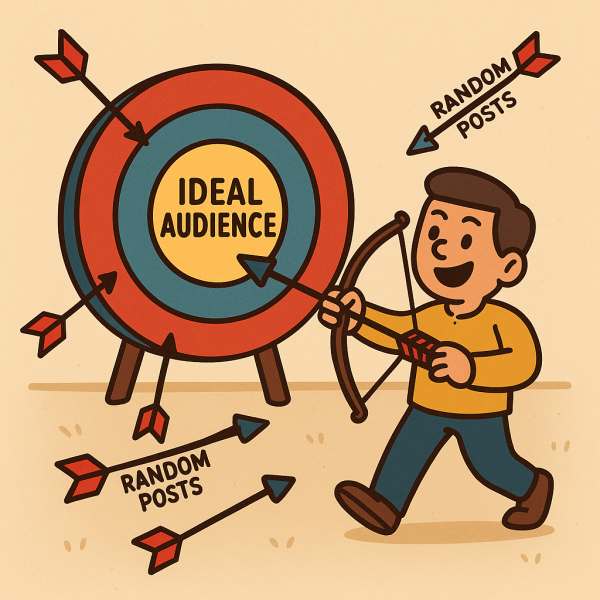
Before you make any content, ask yourself: Who do I want to reach?
Most people think of this in simple terms—age, gender, or job title. But Gary Vee says to dig deeper. Think about their interests, hobbies, subcultures, and even the influencers they follow. The more specific you get, the sharper and more relevant your content will be.
Gary calls this approach “cohorts with teeth.” Instead of a vague target like “18-35 year-old males,” narrow it down to “24-30-year-old males living in New York who love baseball.” The goal is to create content that feels like it’s made for one specific person, not a vague group.
Cohorts Are Dynamic—Adjust as You Go
Don’t assume your first definition will be perfect. Start by defining a few specific cohorts, but stay flexible. Once you start posting, look at your data.
If your content isn’t hitting—try adjusting your cohort. Maybe go broader, or try a more niche angle. Pay attention to the numbers and be willing to adapt.
For example, maybe you create a tax advice video aimed at small business owners, but the data shows a lot of side hustlers are watching it too. That means you just found a new cohort to target.
How to Understand Your Customer
Back in the day, Gary learned this lesson firsthand while selling baseball cards. As a teenager, he’d set up a table at shows, but instead of just waiting for customers, he’d walk around and listen to what buyers were talking about. If he heard people raving about a certain player, he’d highlight those cards on his table.
He used the same strategy with Wine Library by hanging out in online wine forums, figuring out what wines people were excited about, and adjusting his marketing accordingly. Today, social media works the same way—listen, learn, and adapt.
Your content needs to match not just the platform but the culture of your audience. A 20-year-old hip-hop fan in the city talks differently than a 50-year-old hunter in the Midwest or a 37-year-old IT manager. You have to know how your audience communicates, what they care about, and what’s trending.
For example, when the Barbie movie was a hot topic, Wendy’s joined the trend by posting a strawberry frosty with a Barbie hashtag. Or how McDonald’s creates Happy Meals for the big movie of the season, whether it’s Minecraft, Jurassic Park, or Pokemon.
Use Searches, Polls and Surveys
Don’t just guess what your audience wants, go find out what is resonating today by using search.
For example, if you run a car dealership, search for car-related content on TikTok or YouTube. You might notice that videos about “car buying red flags” get a lot of engagement. That’s a hint to create similar content yourself.
Another way to learn what your audience wants is to just ask them. Use polls and questions to gather insights and boost engagement.
Gary did this with his #AskGaryVee series, where people sent him questions on social media, and he turned those questions into content. Not only did it help him understand his audience better, but it also kept people invested.
- Define specific cohorts: Go beyond age and gender—include interests and habits. Speak directly to one type of person to keep your content sharp.
- Adjust as you go: Start narrow, but be ready to adapt your targeting based on feedback. Use polls and questions so your audience can tell you what they want to see next.
🎭 7. Know Each Platform’s Culture: The same message won’t work everywhere. Make your content fit each platform’s unique “vibe” and culture.

The biggest mistake most brands make on social media? Posting the same content everywhere. A LinkedIn post isn’t a TikTok. Each platform has its own culture, tone, and way of engaging. To get results, you need to tailor your content to fit the platform’s vibe.
Think of it like how you act in different social settings—you’re not the same person at a job interview as you are at a backyard BBQ. Social media is the same.
Platform-Specific Strategies
Here’s a breakdown of how to approach each major platform:
- TikTok: TikTok is all about light, casual, and spontaneous content. Hook attention in the first 3 seconds, use trending sounds, and make it feel unpolished. Call out your audience directly and keep it fun.
- Instagram: Instagram offers a mix of content types—photos, carousels, reels, and stories—making it feel like a modern media portal. Experiment with different formats to reach diverse audience segments, and keep your visuals polished because today competition is high.
- X (formerly Twitter): Twitter is the internet’s town square—fast-paced and opinion-driven. Post frequently (even 10-20 times per day!), join trending conversations, and use short, punchy text to capture attention. This is a great platform to understand what people in your industry are talking about and create networking relationships.
- LinkedIn: LinkedIn is professional and business-focused, ideal for many B2B products and services. There’s a strong emphasis on personal branding. Share insights, thought leadership, and industry updates while maintaining a more formal tone. Personal profiles tend to perform better than company pages, so it’s useful to post content on both.
- Facebook: Facebook is still the largest social network, with 3 billion users. It continues to thrive on groups, community and local connections, and has a slightly older audience. This platform is great for local businesses and politicians. A few years ago, organic reach was dead, but now it has come back through a new algorithm, especially for Facebook Reels.
- YouTube: YouTube is built for longer, more thoughtful content, but also has shorts for quick engagement. Make your visuals and editing a bit more polished compared to TikTok. Treat your videos not like an ad, but like a series or a show that people can watch. This is why Gary Vee’s first project succeeded—Wine Library TV was positioned as a wine review show, not just a bunch of commercials for his Dad’s wine store. Google owns YouTube, and search is big on the platform, so optimize for search with a title that includes phrases people are searching for.
- Snapchat: Snapchat is casual and personal, focused on direct messaging and temporary content. Great for reaching younger audiences or local customers, but not ideal for professional branding. Use stories and geotargeted ads to connect. This is a secondary platform compared to the others mentioned.
Use Native Features
In general, you want to make your content feel native to the platform. This means using in-app editing tools (like CapCut for TikTok), creating content that matches what is popular, and tapping into current trends.
Platforms often push new features to encourage adoption. Jumping on these early gives you an advantage. For example, when YouTube Shorts launched, videos on that format saw a massive boost because YouTube wanted to compete with TikTok.
Keep your profile clean and well-organized (profile hygiene). Make sure people immediately see what you do and who you’re for. Pin your best posts, update your bio, and don’t be afraid to include some of your personality—it humanizes your brand.
- Tailor your content: Different platforms have different vibes and culture. Adjust your content accordingly to match the popular formats and styles.
- Be flexible: Stay on top of new features, and experiment with what is working now. This will be very different for Tiktok, which is about light fun, than for LinkedIn, where people are in a business mindset
💰 8. Organic First, Paid Second: Test a lot of content organically first, see what resonates with your audience — then scale your reach with paid.
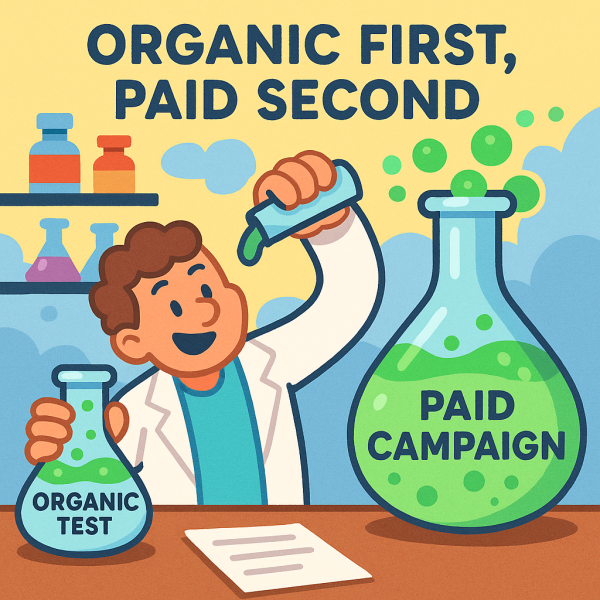
One of Gary Vee’s core principles is to test your content organically before spending money on ads.
Amplify What Works
The idea is simple: try out lots of ideas for free, see what clicks with your audience, and then amplify the winners by running them as paid ads. The goal is to maximize reach while minimizing risk—you’re only putting money behind content that’s already shown it can work.
If you’re a small business, don’t throw big money at ads right away. Start with organic content to learn what connects with your audience.
Once you find something that works, put a small budget behind it. Make some minor adjustments like adding a call to action, then promote it as an ad. Keep an eye on the metrics—like sales, leads, or engagement—and use those insights to improve your next round of ads.
The good news? Algorithms now do more of the targeting for you. Instead of manually defining your audience, you just create engaging content, and the platform figures out who’s most interested. The new algorithm-driven approach also changes how ads are made. You’re no longer forcing content on people, like TV commercials did. Instead, you’re incentivized to create something people want to watch because the platform will naturally push it to more users.
Make sure to keep your ads fresh. If you had a Facebook ad strategy that worked but is now fading, the problem is often ad fatigue. Your audience has seen the same content too often. The solution? Create 10 times more variations. Keep the core message, but change the hook, visuals, or angle to keep it fresh.
Bigger Commercials, Mascots, and Collectibles
Once you have an ad that is working well, you can expand the idea into higher-production strategies, like a more polished commercial.
Gary highlights new opportunities, like Connected TV (CTV) ads on platforms like Hulu. Right now, they’re relatively cheap—kind of like early TV commercials. You can run your commercial on underpriced channels can give you a big boost without spending a fortune.
Also, consider using a mascot to make your brand memorable, like Duolingo’s green owl. A mascot can start as something simple—like using a TikTok filter to put eyes and a mouth on your product. If people love it, invest in a puppet or costume. This strategy worked amazing for big brands a few decades ago, but they’ve forgotten it.
Collectibles tap into nostalgia and fandom. For example, a brand that makes protein bars for young men could create a limited-edition trading card featuring a popular gamer or influencer in that demographic. These little extras can cost little, but make your brand relevant for that cohort.
- Test organically first: Post a lot, see what works, then amplify the best content with ads. Promote content that’s already resonated, not just what you think will work. Use a modest budget at first and increase as you learn.
- Turn proven winners into higher-production commercials, mascots and collectibles. Expand your reach into new channels, make your brand memorable and relevant.
🔍 9. Local Business Strategies: Stay ahead of competition by embracing new platforms and staying ahead of shifting consumer habits.
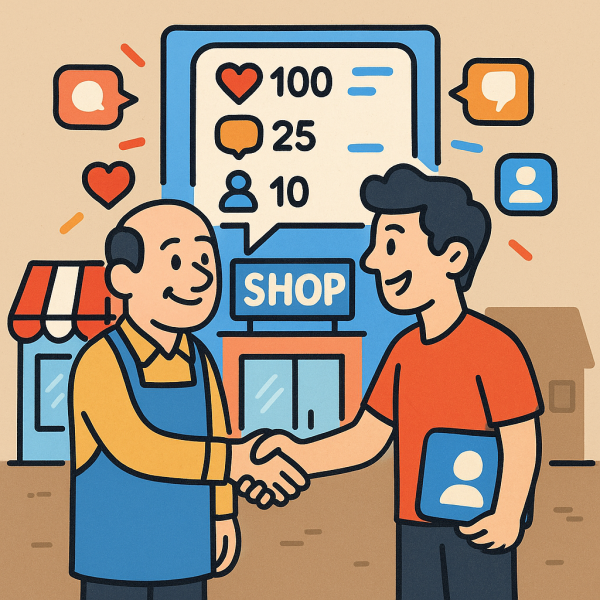
Let’s wrap up this summary by exploring some strategies and advice Gary has to offer local businesses.
Engage With New Marketing Channels
In the early days, people didn’t believe in Google AdWords because they were sticking to Yellow Page ads. Later, they did the same with Facebook ads.
The lesson? Don’t put all your eggs in the basket of a fading medium. Sometimes, the value of new channels doesn’t show up right away, but getting in early can make a big difference later.
For certain businesses, like emergency services, people still turn to Google when they need help. But younger audiences are increasingly using TikTok as a search engine. Even for services like locksmiths, Gary says it’s smart to post 60+ pieces of content on social media. The consumer shift is happening again—from Google to platforms like TikTok.
Don’t Dismiss Indirect or Delayed ROI
Local businesses often hesitate to invest in new platforms because they want immediate sales results. But Gary Vee warns against dismissing a channel just because it doesn’t show instant ROI.
Remember that some marketing impacts are indirect. Someone might see your content online and not buy immediately, but when they need your product weeks later, your brand is top of mind. Instead of measuring every single post’s ROI, look at your overall revenue trends to see if your strategy is working.
Team Up with Local Micro-Influencers
One of the best ways for local businesses to grow is by partnering with local micro-influencers. These are people who are popular in your city or neighborhood, and they can help you build credibility and community presence.
Start by searching social media for your city to find local personalities. Then, invite them to host an event, a meet-and-greet, or a live demonstration inside your store. It’s a great way to attract new customers and build a local following.
What About AI?
As AI changes how people search, building a recognizable brand becomes even more crucial. In the future, people might just tell their AI assistant what they want to order. Your goal? Be the brand they think of first. So they say “order me Starbucks” instead of just “order me iced coffee” which could send the order to many different stores.
- Don’t dismiss new platforms: Immediate ROI isn’t the only measure of success. Think long-term. Younger audiences are using platforms like TikTok to search—you want to be ahead of the curve.
- Partner with local influencers: Get new people in your store by teaming up with popular local creators and community figures.
- Be Consistent: Show up daily, even if it’s with simple content. Ideally, you post 4-5 times per day on a platform. Try it for 30 to 100 days before judging your success.
- Platform Deep Dive: Spend 20 minutes observing the most popular content on each platform you use. Adjust your tone and content style to fit the platform—be playful on TikTok, professional on LinkedIn.
- Create a Cohort Map: List 3-5 specific audience segments, like “25-30-year-old entrepreneurs who love fitness.”
- Speak to One Person: Imagine writing each post directly for a specific cohort. Make the language and examples feel personal.
- Capture Real Moments: Record behind-the-scenes clips, your thoughts during a walk, or your reaction to a trending topic.
- Use Quick Formats: Try selfie videos, skits, or street interviews. Spend no more than 5 minutes recording each.
- Test and Learn: Try different content styles and platforms, track what works, and repeat. Make sure to check the metrics of your posts and figure out why some did better than others.
- Invest in What Works: Post organically to test which content gets the most engagement. Once you find a winner, put a small budget behind it.
- Stay Ahead: Keep an eye on new trends, features, and platforms—and experiment early. Spend an hour each week trying new platforms and features.
What’s the key to winning in marketing?
Follow what big brands do
Use social proof
Stick to proven strategies
Find where attention is cheap
Inspired by TikTok, what do most social media algorithms prioritize?
Follower count
Engaging content
Genuine expertise
Frequent posts
What’s the best way to make content relevant?
Create perfectly scripted posts
Target one specific cohort
Use trending hashtags
Publish highly edited videos
What’s the biggest mistake in content creation?
Not posting enough
Using your phone camera
Not staying on-brand
Posting too frequently
What’s the first step before paying for ads?
Setting a budget
Hiring a graphic designer
Testing content organically
Learning copywriting

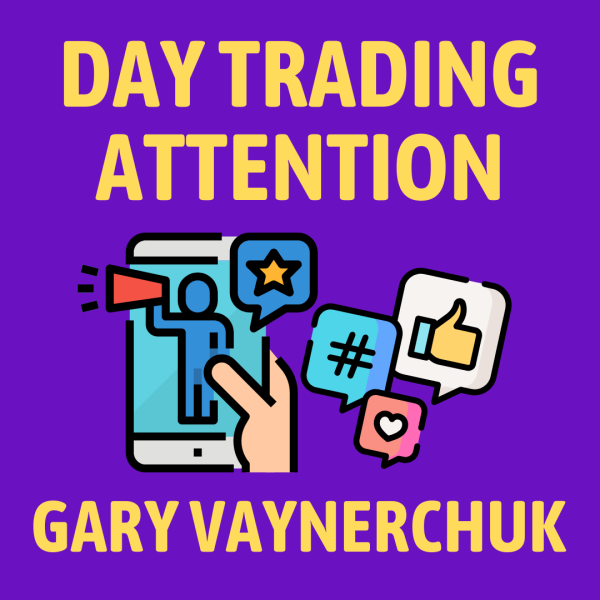
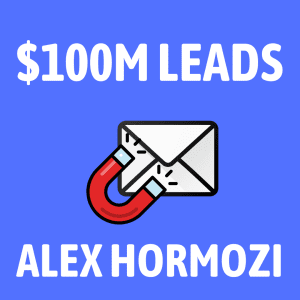
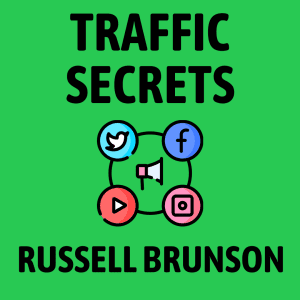

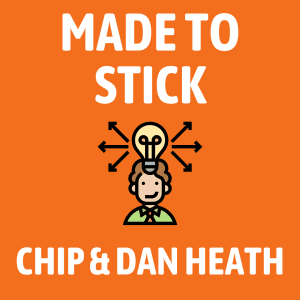
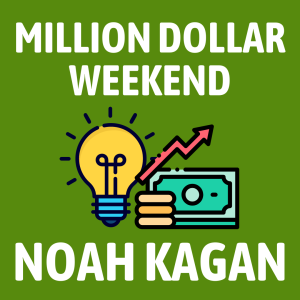

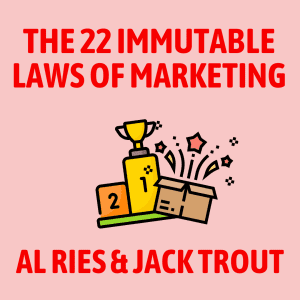
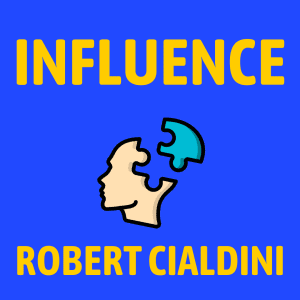


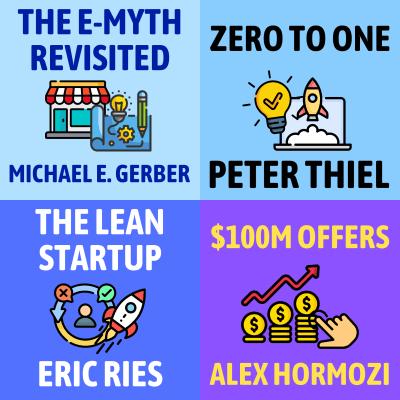

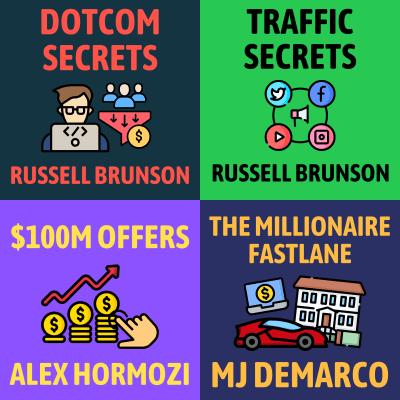

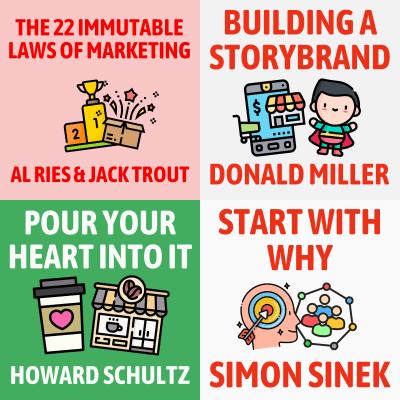
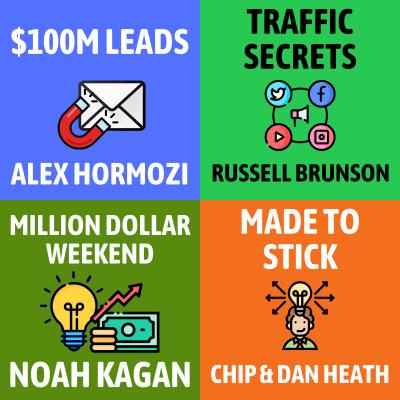
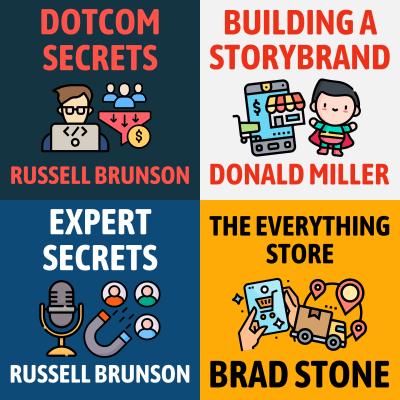
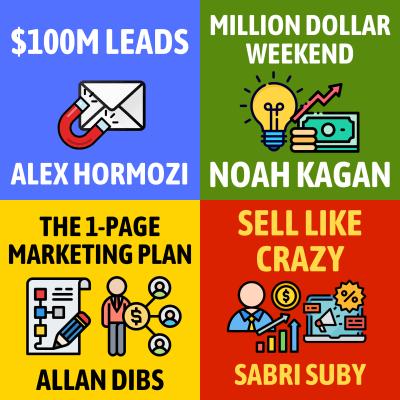
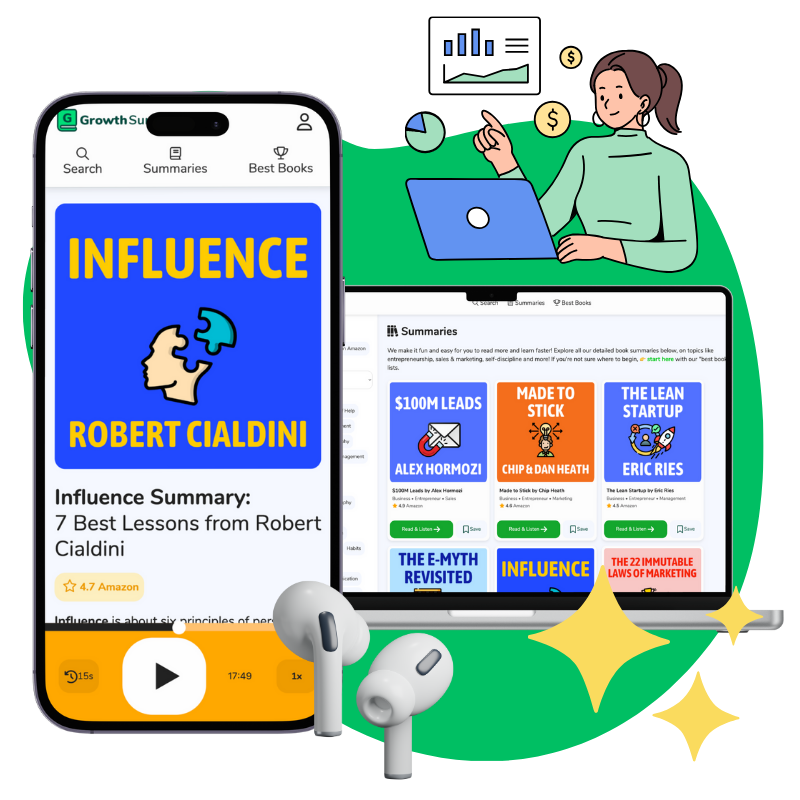
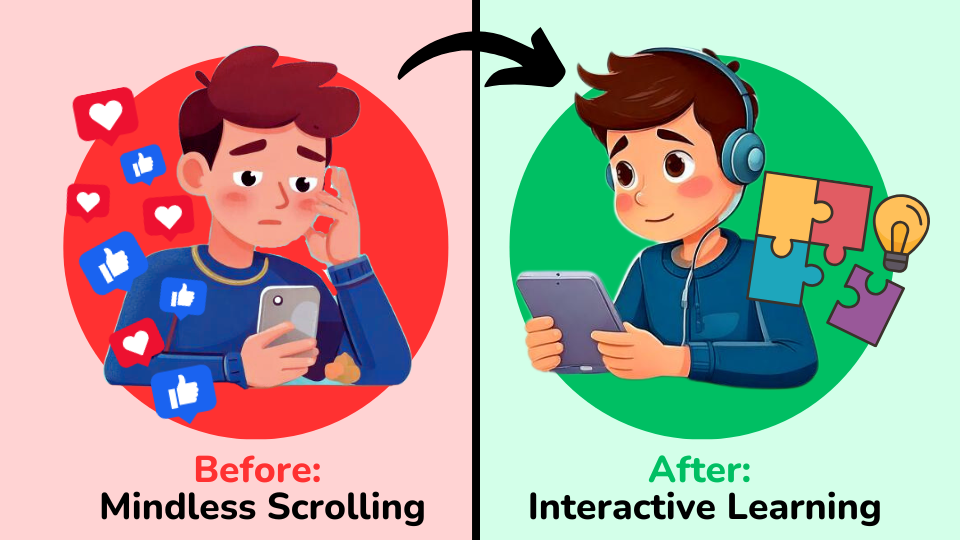








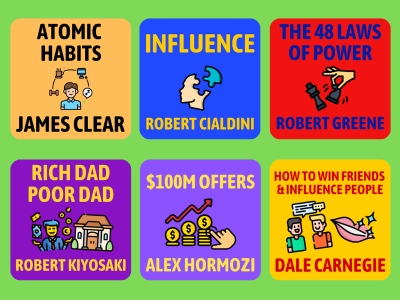
Community Notes